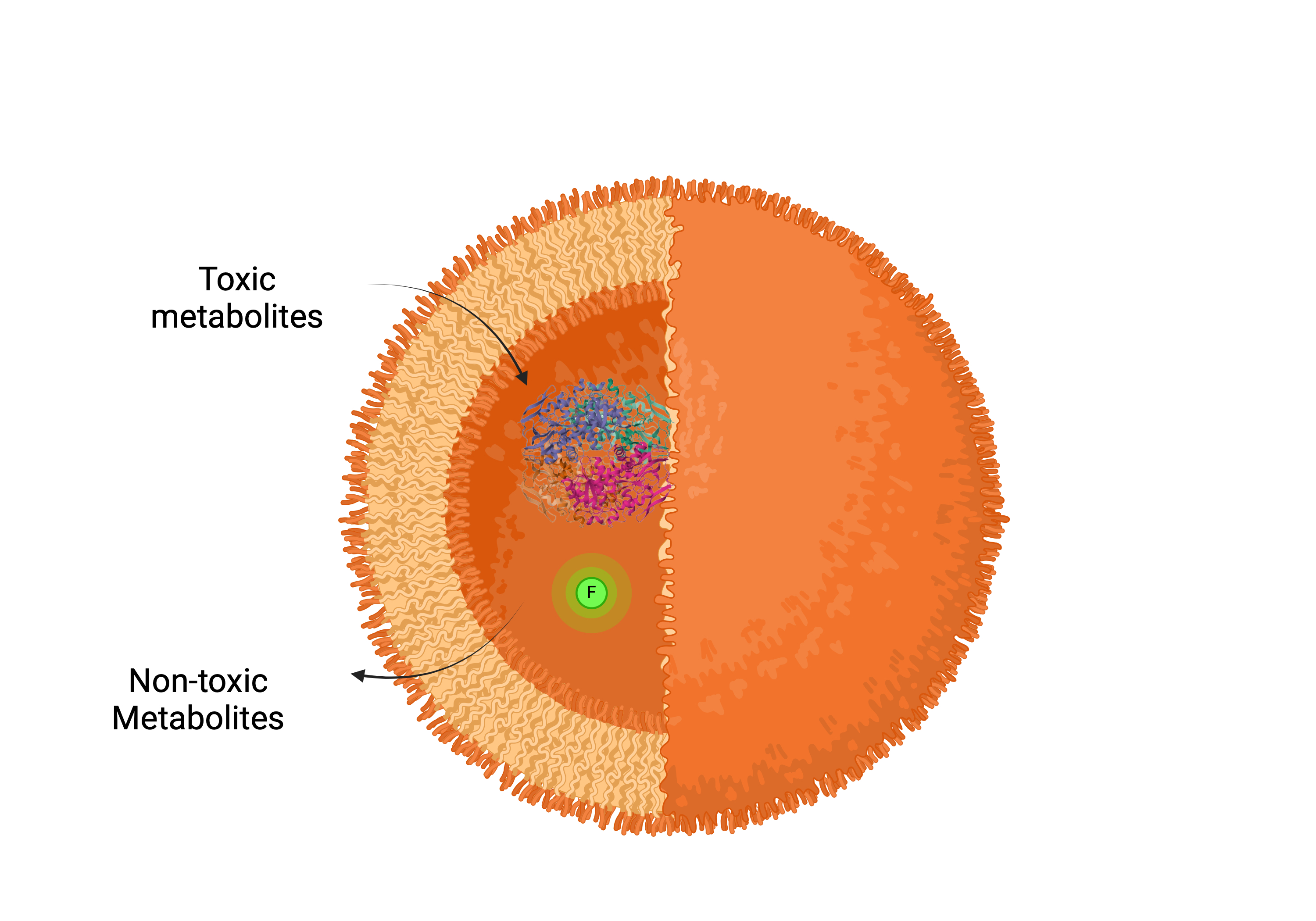
Angela Mutschler
Assistant professor
Description : Over the past decade, numerous studies have highlighted the presence of excessive endogenous formaldehyde production in different pathologies, including vascular disorders, diabetic complications or cognitive impairment. Formaldehyde is considered a critical factor that exacerbates the harmful effects associated to these pathologies. Currently, there are no reported approaches aimed at directly preventing or eliminating the excess formaldehyde metabolite from the body. This project aims at developing a solution involving the sequestration of formaldehyde metabolites and the regulation of their levels through the use of an innovative nanotrapping agent. To that purpose, polymeric vesicles, namely polymersomes, will be designed and will act as a nanocatalyzer to transform toxic metabolites into non-toxic bioproducts. The proposed formulation involves the incorporation of specific enzymes within biocompatible polymersomes to facilitate the conversion of endogenous formaldehyde. Additionally, co-encapsulation with other reactive agents will be established to monitor the in-situ conversion of formaldehyde. A crucial aspect of this project will focus on engineering the membranes of polymersomes, including their composition and thickness, to enable formaldehyde diffusion from the external environment while maintaining the stability and activity of the loaded enzymes. The membrane permeability of the polymersome will be fine-tuned by selecting appropriate block copolymers, taking into consideration the chemical nature and molecular weight of the hydrophobic block. Optimization of enzyme and reactive agent loading will further enhance the process of eliminating formaldehyde to produce non-toxic compounds. Lastly, we will investigate the sequestration effect of polymersomes in vitro. We believe the presented project will create a breakthrough in the field of nanomedicine by using a new strategy not for a classical delivery purposes but at the opposite, by creating an entrapment system.

Schematic representation of the FORMATRAP Project